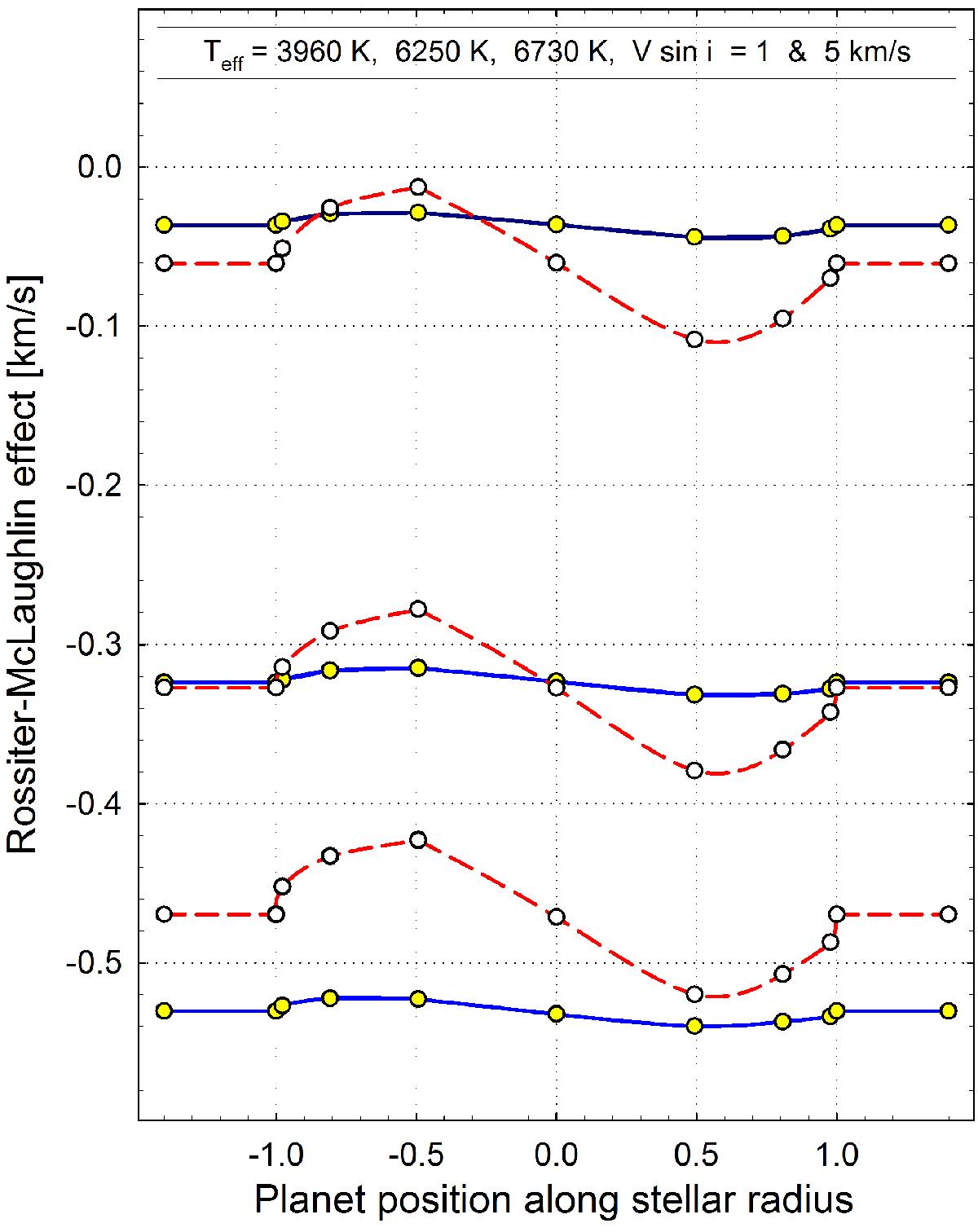Fig. 12

Apparent radial velocity of rotating stars changes during planetary transits owing to the Rossiter-McLaughlin effect, here modeled for stars of three different temperatures (“K8 V”, “F7 V”, and “F3 V”) for the rotational velocities V sin i = 1 and 5 km s-1 (solid blue and dashed red, respectively). The planet was assumed to cover 1.5% of the stellar disk area with the transit along the stellar equator. The signal was obtained as a Gaussian fit to the line profile in integrated starlight. The wavelength values reflect different amounts of convective blueshift and are also affected by rotational line broadening, while the amplitudes are a function of rotational velocity. Gravitational redshifts are neglected.
Current usage metrics show cumulative count of Article Views (full-text article views including HTML views, PDF and ePub downloads, according to the available data) and Abstracts Views on Vision4Press platform.
Data correspond to usage on the plateform after 2015. The current usage metrics is available 48-96 hours after online publication and is updated daily on week days.
Initial download of the metrics may take a while.


